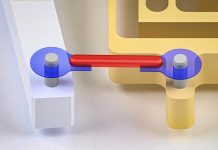
A new breakthrough in 3D printing at Oak Ridge National Laboratory (ORNL) could speed up the way car parts are made in the U.S.
Researchers have shown that using 3D-printed metal molds can be faster, cheaper, and more flexible than traditional methods of building molds for car components.
This innovation could help American manufacturers make vehicles more efficiently and with less waste.
At ORNL’s Manufacturing Demonstration Facility, scientists successfully created large, complex molds using a method called additive manufacturing.
Instead of carving shapes out of huge blocks of steel—a slow, wasteful process—3D printing adds metal layer by layer to build a mold from the ground up.
This modern approach wastes only about 10% of material, compared to nearly 98% in traditional manufacturing, and can be completed much more quickly.
Andrzej Nycz, the lead researcher from ORNL’s Manufacturing Robotics and Controls group, says this new technique could help the U.S. reindustrialize by offering smarter and faster ways to make essential tools.
According to Nycz, “The more complex the shape, the more valuable additive manufacturing becomes,” because 3D printing allows engineers to create designs that would be very difficult or even impossible using conventional machining.
For example, molds can be built with internal heating channels that improve performance but are hard to make with traditional tools.
To test their idea, the research team partnered with Collaborative Composites Solutions (CCS), which works with IACMI–The Composites Institute. Together, they decided to 3D print a large mold for a battery enclosure—an essential part of electric vehicles. The mold included detailed internal features to see how well the technology could handle a real-world application.
They used a process called gas metal arc welding (GMAW), where an electric arc melts a wire made of stainless steel (ER410) and builds the mold one layer at a time.
A protective gas is used during the process to prevent any damage from contamination. To reduce the mold’s weight while keeping it strong, the team used a special toolpath design.
The final mold passed all strength and performance tests, proving that 3D printing can be a practical and reliable way to create complex, high-quality tools for the automotive industry. This approach could also make it easier for automakers to adopt lightweight composite materials, which help improve fuel efficiency and reduce emissions.
Overall, this work marks a big step toward smarter, cleaner, and faster manufacturing in the U.S. auto industry.
Source: KSR.



